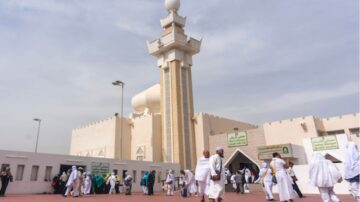Situated approximately 24 km northwest of Mecca lies Jirana, a location steeped in historical significance. “Do not be like the woman who breaks the thread after she is strong, and we leave her with many strands” (Quran 16:92). This verse serves as an allegory for those who betray their covenant with Allah. The woman referenced here is Raitwat bint Ka’b, a Qurayshi woman known as Jirana. Married to Asad ibn Abd al-‘Uzza, she would diligently spin strong yarns daily, only to destroy them each evening due to her irrational fears, earning her the moniker Jirana and lending the village its name.
This area has borne witness to pivotal moments in Islamic history, particularly following the Battle of Hunain and Tawaif. The Prophet Muhammad stayed here for thirteen nights post-battle, during which he distributed the spoils of war, including prisoners, camels, sheep, and silver, generously to the people of Mecca, as a gesture of goodwill towards those who embraced Islam after the city’s conquest. Additionally, it was at Jirana that Sufyan ibn Umayyah, a staunch adversary of the Prophet, embraced Islam.
Sufyan’s conversion marked a profound shift, considering his prior attempts on the Prophet’s life and his leadership in the siege of Mecca. He sought refuge with the Prophet, who welcomed him with open arms. Witnessing the Prophet’s magnanimity, Sufyan’s heart softened, leading him to embrace Islam.
Moreover, Jirana saw the return to Islam of the Hawazin tribe and Malik bin Auf, who had sought refuge with the Sakhif tribe. Learning of the Prophet’s generosity towards prisoners and captives, they returned to Islam, with Malik entrusted with leadership and resources to rebuild their community. Among the hostages was Shaima bint Haris, the Prophet’s foster sister, whose emotional reunion with him moved the Prophet to tears.
Jirana is not just a place of historical events; it is also a spiritual sanctuary. After performing Umrah, the Prophet left for Medina, leaving behind the legacy of Bir Jirana, a well from which he once drank. The mosque at Jirana, erected in the third century Hijra, stands as a testament to this rich history, renovated by the Saudi government in 1263. Today, it can accommodate thousands of worshippers and holds significance as the first stop outside of the Haram.
In conclusion, Jirana embodies the enduring legacy of faith, forgiveness, and redemption, etched into its very landscape, and immortalized in the hearts of believers.
By Mufeed Muhammad

